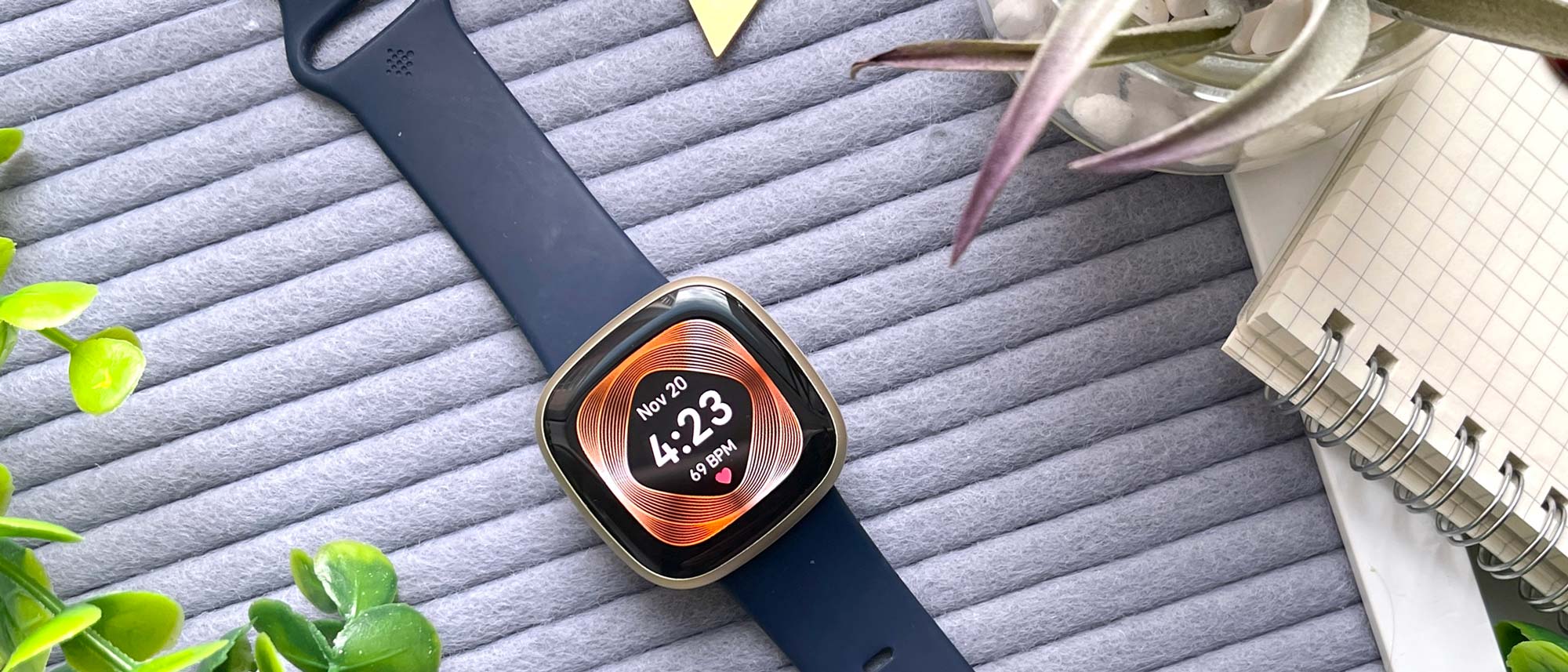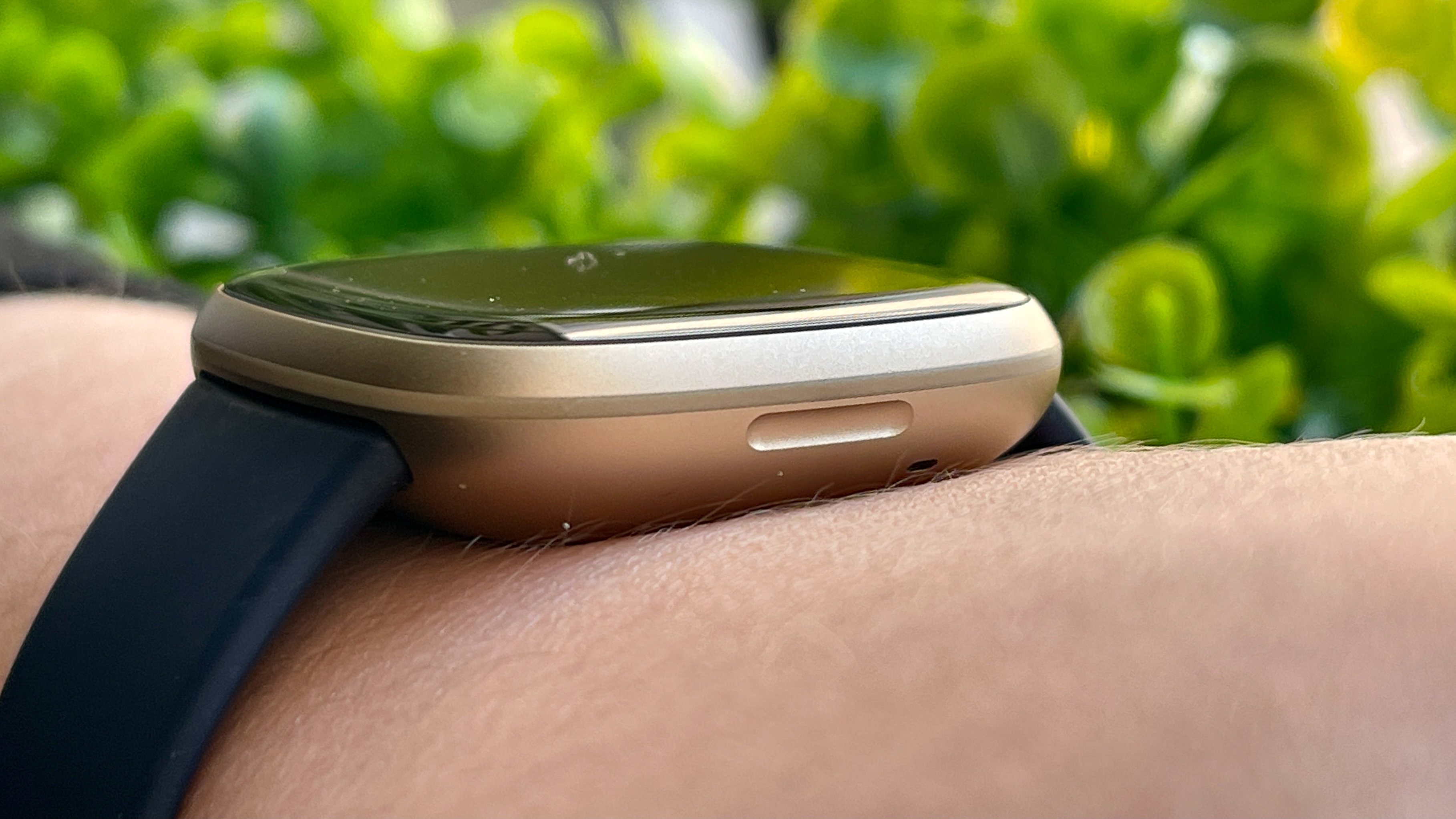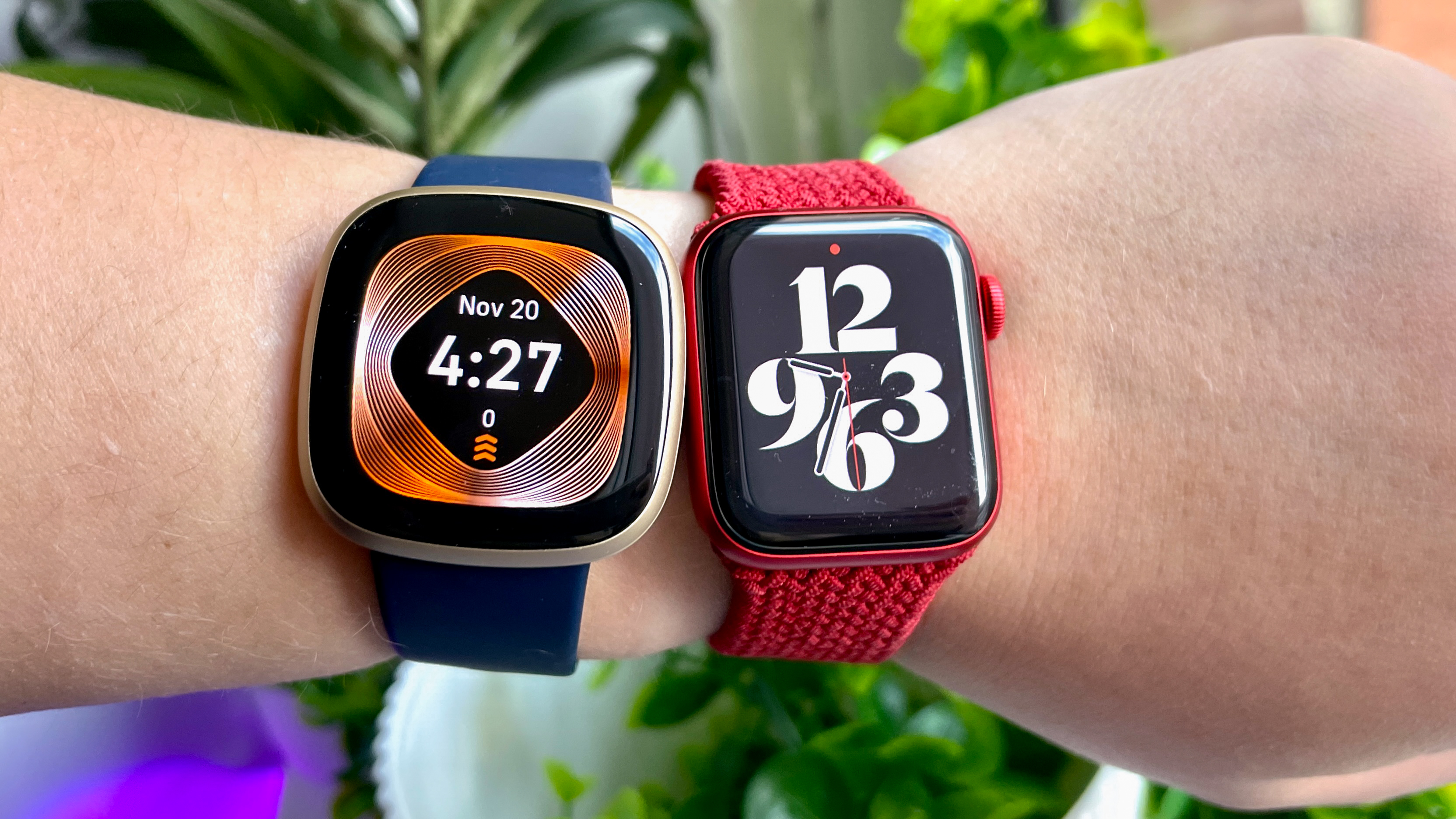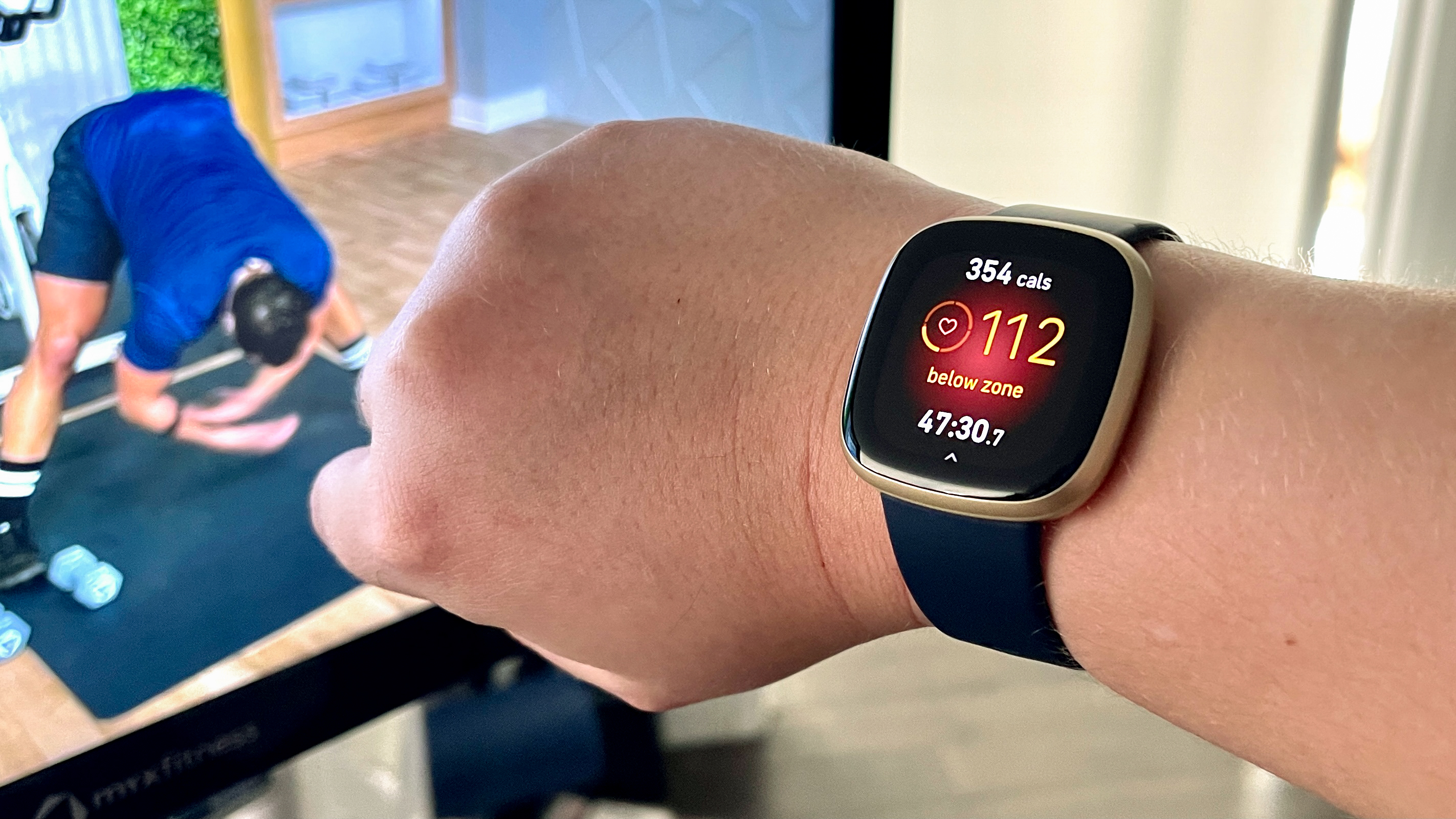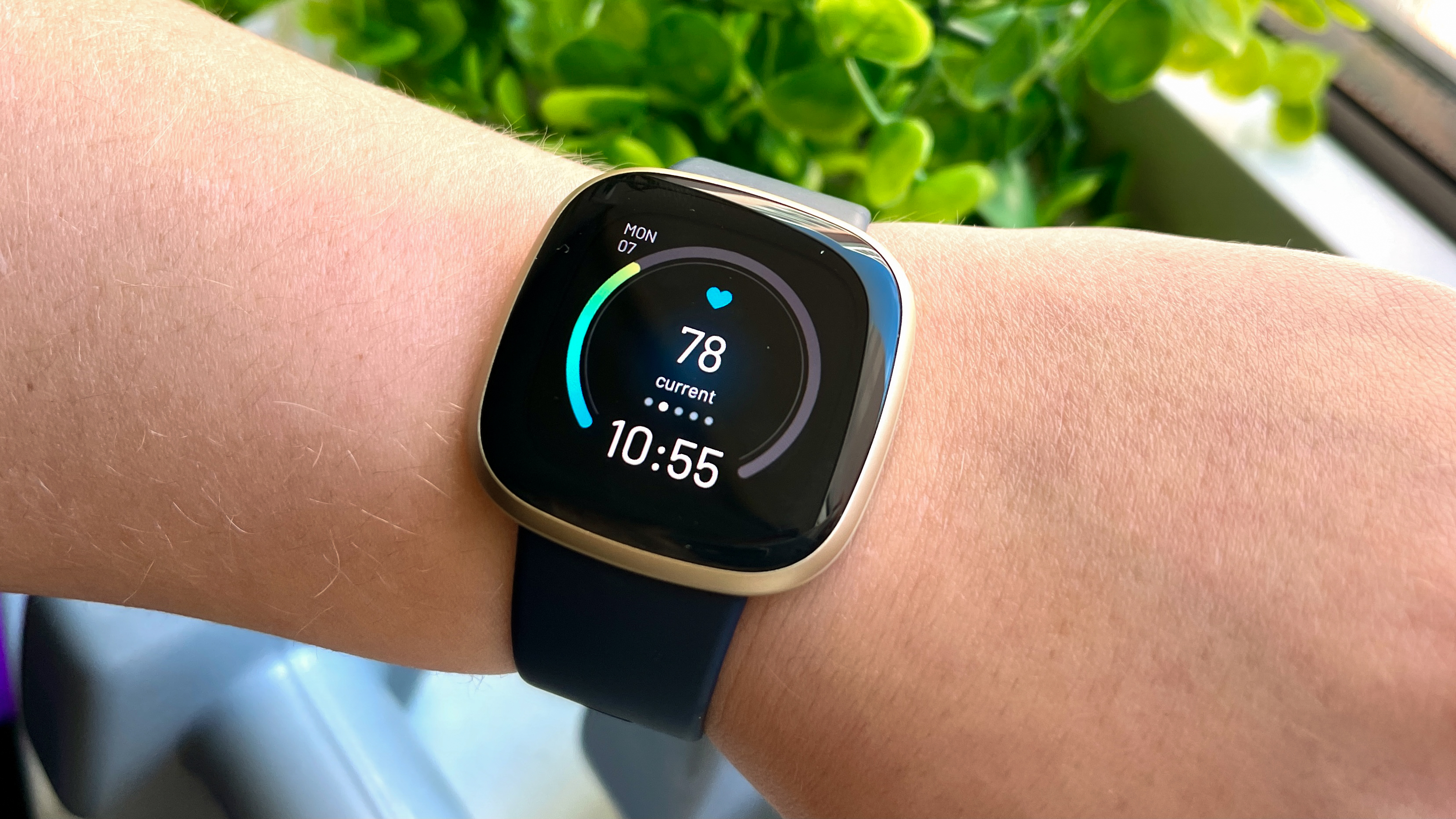Tom's Guide Verdict
The Fitbit Versa 3 ($229) is an attractive mid-range smartwatch with advanced fitness tracking and reliable battery life.
Pros
- +
Comfortable, sleek design
- +
Larger display than Versa 2
- +
Great battery life
- +
On-board GPS
Cons
- -
Navigation could be faster
- -
Can only enable one voice assistant at at time
Why you can trust Tom's Guide
Price: $229
Water resistance: 50 meters
GPS: Yes
Heart rate sensor: Yes
Display: 1.58-inch. 336 x 336-pixel touchscreen
Contactless payment: Fitbit Pay
Battery life: 6 days/12 hours continuous GPS
Voice assistants: Alexa, Google Assistant
Fitbit’s Versa lineup is, if anything, reliable. Now in its third iteration, the Fitbit Versa 3 ranks among the best smartwatches, tacking on useful software improvements and design tweaks to become a formidable Apple Watch SE rival and a fitness tracker with obvious appeal.
Fitbit Versa 3’s standout upgrade is on-board GPS. Now, even when you leave your phone at home, the Versa can (finally) track your location during outdoor exercise. A curvier, larger display is welcome, too. What’s less appreciated is the $229 price tag, which is more expensive than the $199 Fitbit Versa 2 and disqualifies this model from our best cheap smartwatches rankings.
So is the premium justified? This Fitbit Versa 3 review answers whether the fitness tracking company’s midrange smartwatch still offers solid value for the price.
Fitbit Versa 3 price and availability
The Fitbit Versa 3 costs $229 and is available as of this writing at Fitbit.com and other retailers.
As for colors, the Versa 3 comes in three finishes: black/black aluminum, pink clay/soft gold aluminum and midnight/soft gold aluminum. The Versa 3's band is also interchangeable; other bands, including woven and leather, are available starting at around $30.
Update: A Fitbit Versa 4 could be coming soon based on a leak, but it may not run Google's Wear OS as we hoped. The Versa 4 could also have the same design as the Versa 3, based on a now-deleted video.
Fitbit Versa 3 review: Design and display
The Fitbit Versa 3 sports a similar squircle shape as the previous two Versa models, but has slightly softer edges and swaps out the physical button of the Fitbit Versa 2 for an indented touch area with haptic feedback on its left side. I haven’t tested a Fitbit with this design feature yet, so it took some getting used to but I grew to favor it over a button.
Get instant access to breaking news, the hottest reviews, great deals and helpful tips.
It adds to the Versa 3’s everyday comfort, too. I like when a smartwatch sits flush to my wrist and few models I’ve tested this year offer the same slimness. If you prefer the look and feel of a bulkier watch, one of the best sports watches is probably better for you.
Another incremental design change arrived for the Versa 3's display. Its 336 x 336-pixel color touchscreen is a small improvement from the 300 x 300-pixel on the Versa 2. At 1.58 inches, it's also larger than the 1.39-inch screen on the Versa 2, and once again offers an always-on mode. I especially appreciated expanded real estate for viewing my mid-workout metrics.
Fitbit Versa 3 review: Activity tracking features
Fitbit’s bread and butter is activity tracking, so it’s no surprise that the Versa 3 is a capable health buddy. While it packs everything you’ve come to expect from the fitness tracking savant — heart rate monitoring, blood oxygen (SpO2) monitoring, VO2 max readings, workout tracking, sleep tracking — it skips out on some features we raved about in our Fitbit Sense review.
For $329, the Fitbit Sense is the best Fitbit because it offers FDA-approved ECG monitoring for detecting atrial fibrillation, stress management tools, a skin temperature reader and high and low heart rate notifications. If any of these sound like data that would improve your relationship with your health, you might find the Sense is worthwhile. But if you’re looking for something that’s great at the basics, the Versa 3 holds its own.
Plus the Versa 3 has gained my favorite motivational workout feature of the moment, Active Zone Minutes. First introduced with the Charge 4, Active Zone Minutes monitors the time you spend in the fat burn, cardio or peak heart-rate zones while exercising. Your goal is to earn the AHA’s and WHO’s recommended 150 Active Zone Minutes each week. As long as I exercised for 30 minutes 5 times per week, winning this little game was no sweat. Well, except for all the sweat from working out… TMI?
With the cooler weather and safety protocols, I mostly stuck to exercising inside with the Peloton App and a spin bike I’m testing. For fitness guidance, you could subscribe to Fitbit Premium ($9.99/month, $79.99/year), the at-home coaching service that seamlessly integrates with your Fitbit Versa 3. Fitbit Premium is great for advanced sleep metrics and health metrics, too.
When I did venture outside, the Fitbit Versa 3’s on-board GPS proved useful for seeing my real-time walk/jog/run pace and distance. I often like to leave my phone behind for outdoor activity, but previous Versa models didn’t offer that convenience. Although GPS can be a battery-killer, it’s a necessity for any formidable fitness tracker, in my opinion. In terms of accuracy, I found the Versa 3 generally underreported distance compared to my Apple Watch, but not by much.
- Fitbit Versa 3 vs. Apple Watch 3: Which smartwatch should you buy?
Fitbit Versa 3 review: Sleep tracking
Similar to activity tracking, Fitbit has a great reputation for sleep tracking tools among the best fitness trackers. When I wore the Versa 3 to bed, it kept tabs on how much time I spent asleep every night, plus how long I spent in the various sleep stages. It also monitored my blood oxygen saturation while I snoozed, so if I suffered any severe changes in SpO2 I could be tipped off to underlying breathing issues like sleep apnea.
Based on this data, Fitbit provides a daily Sleep Score between 0-100. Most mornings my score landed in the 80s, although on one particularly restless night I landed in the 40s with hardly two hours of sleep under my belt (or covers.)
Fitbit Versa 3 review: Smartwatch features
As a smartwatch, the Versa 3 is capable, but not extraordinary. In addition to Alexa, the Versa 3 supports Google Assistant, making it the first smartwatch with access to both major voice assistants. One caveat is that you can only have one assistant active at a time, and I use both in my day-to-day testing of the best smart home devices, so I could only control about half of my gadgets à la James Bond.
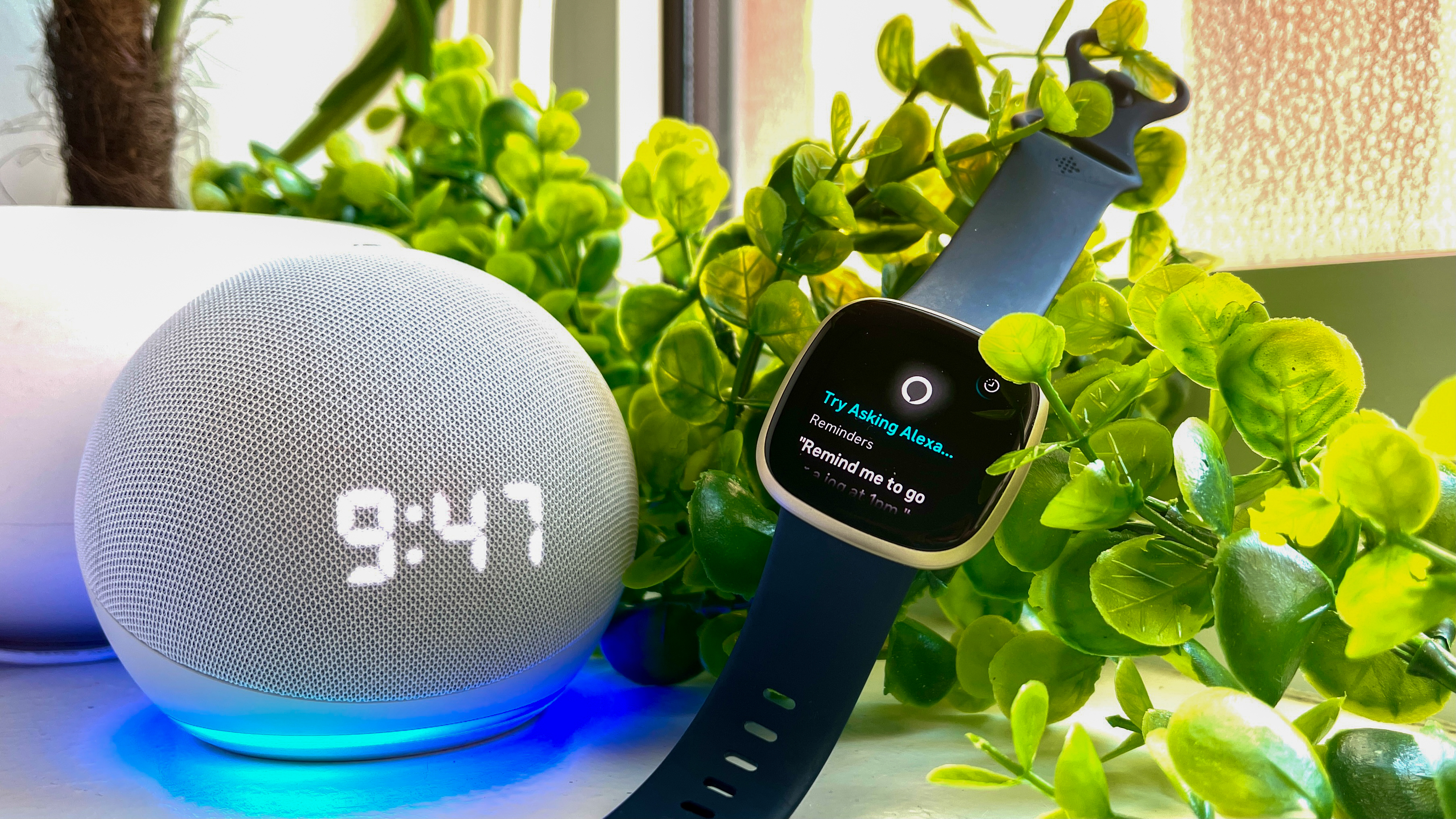
That said, the Fitbit Versa 3's built-in speaker and microphone also offer the ability to answer phone calls from your wrist. However, this feature is limited to those with Android phones. I’ve been using an iPhone 12 Pro Max, so I didn’t get to test it out.
I did like the access to Fitbit Pay, as well as the availability of third-party apps for Starbucks, Yelp, Walgreens, The New York Times and more. Fitbit’s app library is getting larger, but it still lacks compared to Apple’s watchOS App store.
The Versa 3 also lags compared to my Apple Watch SE. I poked around online to see if other reviewers and users noticed how apps can be slow to open and displays slow to switch, and sure enough I wasn’t the only one who felt the Versa 3 could be more responsive. It’s not a huge dealbreaker, but if you’re accustomed to the speedy performance of your smartphone or other smartwatch, the Versa 3 might frustrate you.
Fitbit Versa 3 review: Battery life
Fitbit claims the Versa 3 gets 6 days of battery life, which is an improvement over the Versa 2's 4 to 5 days. Of course, enabling the Versa's always-on display and using GPS will zap its stamina. Still, the Versa 2 should last for about 12 hours when it’s actively tracking your location. That’s a huge advantage over the midrange Apple Watch SE, as well as top-shelf smartwatches like the Apple Watch Series 6 and Samsung Galaxy Watch 3.
I eked nearly 7 days out of the Versa 3, although I usually charged it up when it dipped under 20% after 5-6 days. The best part? It juiced back up to 100% with Fitbit’s fast charging, magnetic charger in just 60 minutes.
Fitbit Versa 3 review: Verdict
While I could argue the Fitbit Sense’s large catalog of health capabilities is worth an additional $100, most people will find the Versa 3 offers everything they need out of a fitness-focused smartwatch. Would I upgrade from a Versa 2? Not necessarily, but the addition of Active Zone Minutes, a higher-resolution display, sleeker design, fast charging and — at last — GPS, makes the Versa 3 an excellent evolution.
As for whether I’d recommend it over the Apple Watch SE, well, that depends on just how “smart” you want your smartwatch to be. While the Versa 3 has the advantage in terms of activity tracking, its smaller app library, no iPhone call support and performance lag could be a bit of a turn off.
Those quirks aside, the Versa has a secure position in the mid-range smartwatch category, and should be on your short list if you’re looking for a well-rounded wearable under $250.

Kate Kozuch is the managing editor of social and video at Tom’s Guide. She writes about smartwatches, TVs, audio devices, and some cooking appliances, too. Kate appears on Fox News to talk tech trends and runs the Tom's Guide TikTok account, which you should be following if you don't already. When she’s not filming tech videos, you can find her taking up a new sport, mastering the NYT Crossword or channeling her inner celebrity chef.
